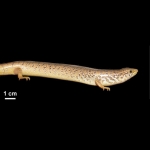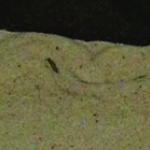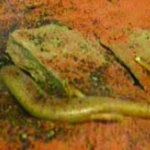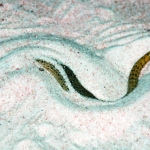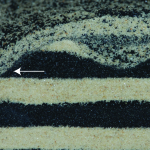Ocellated Skink (Chalcides ocellatus)
For full details see Catena and Hembree (2014) in Palaeontologia Electronica.
Description of Organism
- Present in arid regions across a wide geographic range, including southern Europe, northern Africa and western Asia
- Easily distinguished from other skinks due to reduced limbs and eyelike spots on back and sides
- Adult reach a snout-vent length (SVL) of 30 cm
- Known to be a generalist sand swimmer that burrows from protection and to regulate its temperature
- Inhabits a variety of environments including sand dunes, gravel plains, and river beds
- Feed on a variety of insects
Published Descriptions of Organism
Catena and Hembree (2014):
- Chalcides ocellatus, or the ocellated sand skink, is the most ancestral species of the genus Chalcides. Chalcides ocellatus inhabits arid environments across a wide geographic range that includes southernmost Europe, northern Africa, and western Asia. This species is easily distinguished from other skinks by its highly reduced limbs and eyelike spots, which cover its back and sides. Known to be a generalist sand swimmer, C. ocellatus burrows for protection and thermoregulation in sedimentary environments including sand dunes with and without rocky outcrops, gravel plains, and river beds. Adult C. ocellatus have a snout-vent length (SVL) of 15.0–30.5 cm, are viviparous, and insectivorous.
Burrowing Technique
Chalcides ocellatus burrows in dry, loose sand by plunging its cone-shaped head into the sand while pushing on the sediment surface with their front legs. Once enough traction is gained, the sand skink presses its front and hind legs against their bodies and propels itself through the loose sand with lateral undulations of the entire body and tail. Chalcides ocellatus can also burrow through excavation, using its forelimbs to dig out loose sand. This technique is typically used to excavate shallow burrows beneath rocks or similar objects on the sediment surface.
Burrowing Technique Videos
Burrowing Behavior
Chalcides ocellatus burrows immediately upon introduction to an enclosure. Traces produced by C. ocellatus are the result of locomotion through the loose sand, the production of temporary shelters within the sediment, and escape from surface disturbances. The maximum observed depth of burrowing is 4.2 cm, although the greatest activity occurs within the top 2 cm of the sediment. Bioturbation decreases with depth, and is greatest near rocks or basking surfaces on which the skink rests while not underground. Chalcides ocellatus does not stay in any one location for long periods of time and, therefore, does not produce permanent dwelling burrows.
Trace Morphology
Chalcides ocellatus primarily disrupts primary sedimentary structures (bedding, lamination, crossbedding) rather than producing open burrows. Through sand swimming C. ocellatus produces a number of distinct sedimentary structures including sinuous trails, mounds, U-shaped divots, layer truncations, and flame structures. When burrowing in moist sand C. ocellatus does produce temporary open burrows; these open burrows are not maintained and collapse soon after they are produced.
